EVGA Torq X10 Carbon Gaming Mouse Review
Manufacturer: EVGAUK price (as reviewed): £69.95 (inc VAT)
US price (as reviewed): $99.99 (ex Tax)
Having already started to release power supplies and cases, EVGA is moving into the highly competitive world of gaming peripherals, starting with its first mouse, the Torq X10. The model we have is the Torq X10 Carbon, a reference to its carbon fibre surface. It retails for £70, £20 more than the non-Carbon edition. This discrepancy is not a good start, as the Torq X10 Carbon offers nothing more than this material difference over the Torq X10, and the 40 percent price hike for the privilege is difficult to stomach.
On the plus side, the carbon fibre is nice to the touch, though the mouse still isn't as comfortable to hold as those with good soft-touch plastic coatings like the Mionix Naos 8200. The premium material, coupled with the full metal base, also lends the mouse a robustness that is rarely found. The smooth, reflective sides are not too slippery and don't feel tacky, while the main matt surfaces are dotted so as to provide natural grip. The six foot USB cable, which is silver coated and braided, emerges from the left hand side. We don't have the standard Torq X10 to compare to, but next to other competitors invariably made from plastic the Torq X10 Carbon comes off feeling exceptionally well-made and solid.
The Torq X10 is symmetrical because it has an ambidextrous design, with front and back buttons on both sides. Your ring finger is left resting on these red buttons, with your little finger naturally finding grip beneath them. The outside edge of the buttons, however, isn't rounded or smoothed, so it takes time to get used to the resting place.
EVGA allows users to perform two physical adjustments on the Torq X10: height and weight. The height is adjusted using a Torx T10 screwdriver (provided) to turn the rear nut, which in turn raises or lowers the two central portions. It's a generous amount of adjustment and allows you to find an angle that best suits your hand and grip. We found the approximate mid-point to be best for a palm grip, and the highest point best for a claw grip, as the rear here has a sharper angle. Once you have it right, your hand will not notice the cutaway area between the two main sections.
Six weights are also supplied with the mouse, two each of 2g, 4g and 6g. Pulling off cover over the main buttons reveals a rubber housing in the centre, where two weights can be inserted. This means you can only increase the weight by a maximum of 12g – we would have liked EVGA to include heavier weights or more holes, as this isn't that much.
The Torq X10 technically has nine programmable buttons but because of the ambidextrous design then unless you have freakishly good control of your pinky and ring fingers, it's actually seven that are usable. The main clickers are backed by Omron switches with a 20 million click rated lifetime. They feel well balanced – not too light that you accidentally press them when resting but light enough that you can click repeatedly with pace without tiring. Sadly, the side buttons aren't so good; they feel wobbly and imprecise, and their position isn't ideal – a little too far forward and high, and slightly unnatural as a result.
The scroll wheel provides pleasing feedback with its deep ridges as you scroll and has a pleasant rubber coating. It's also impossible to accidentally trigger a scroll with a slight rock of the wheel (something that happens on cheaper, less finely tuned mice) and the wheel itself is very secure in its socket and clicks nicely, again without ever also triggering a scroll.
Next we have the DPI buttons, which are easy to reach just behind the scroll wheel. However, they have the same, small shape and are very close together – in fact, they're both activated by a single piece of plastic, rather than being physically separate. As such, it takes a while to get used to accurately hitting the right one, especially in the heat of battle. Also, if you scroll down too forcefully, especially with larger fingers, you risk rocking the DPI switch backwards and sending your DPI level a step down. The last button, which is non-programmable, is a profile switch one, located on the underside of the mouse, where you also find the two large PTFE feet. This means on-the-fly profile switching isn't possible by default, but the software does allow you to change this.

MSI MPG Velox 100R Chassis Review
October 14 2021 | 15:04


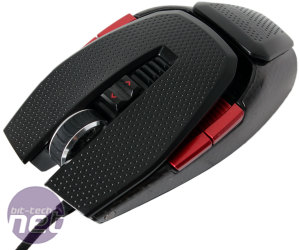
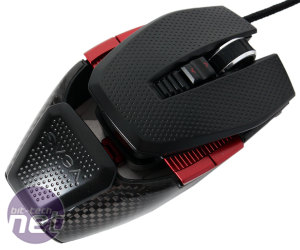
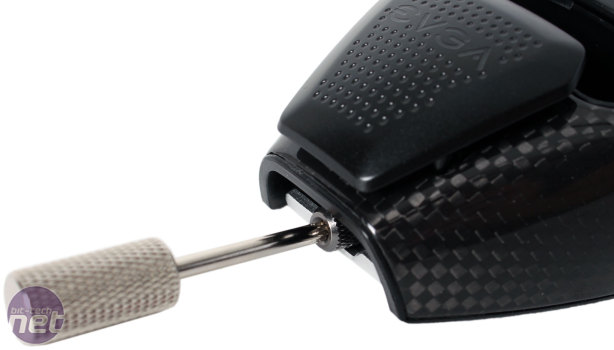


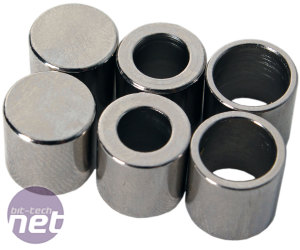
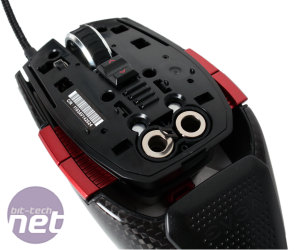
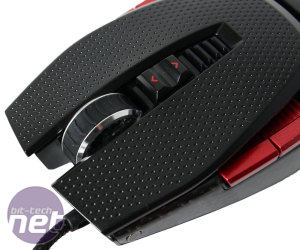
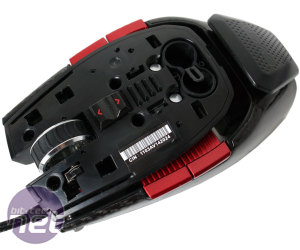








Want to comment? Please log in.